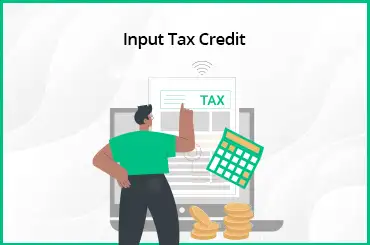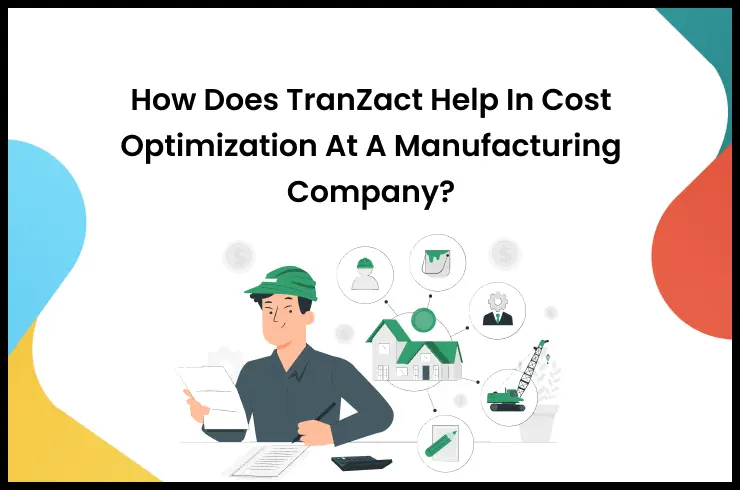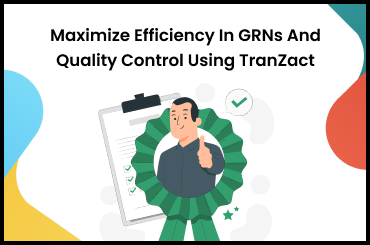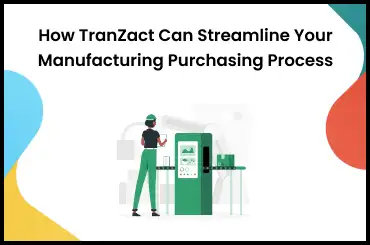A manufacturing business with excellent purchase order management ensures a well-performing inventory management system that promotes productivity, efficiency, and profitability. Streamlining procurement by direct purchase is necessary for an effective stock management system. It also allows you to facilitate internal purchasing and approvals, for the entire manufacturing process to succeed.
There are many strategies that you can use while arranging your purchase order activities. This blog post will explain purchase order management in detail. It will also take you through the steps of purchase order, its importance and purchase order system benefits.
What Is Purchase Order Management?
Purchase order management is the process of creating, managing, and approving purchase orders in the business. It is more than just a contract between sellers as well as buyers. It is an intricate process with several details. In technical terms, the purchase order (PO) is a document issued by the buyer to a seller. It outlines what type, quantity, and quality of goods or services they wish to purchase from that vendor.
PO management system involves managing accurate records of purchase orders. Their progress is then monitored from placement through delivery. PO management systems can either be manual or cloud-based. Cloud-based ones typically offer features such as automated order tracking, and alerts for buyers and sellers when an order is placed or updated. They also offer integration with accounting software.
What Is the Purchase Order Management Process?
The purchase order management process refers to the system, which connects buyers and sellers. It allows the buyers to purchase the required goods and services as per their requirements. It happens through a contract with the desired supplier.
A purchase order process steps begin where a purchase requisition ends. It starts with creating the order, followed by approval from the manager. In turn, the supplier accepts the purchase order. The purchase order document is referred to by any of the parties in case of a dispute. The purchasing process steps involve checking budgets and quality.
Purchase order management was created to simplify and enhance this purchasing process for buyers and sellers alike by automating repetitive tasks and maintaining accurate records.
Steps Involved in Purchase Order Process
PO management process reduces errors and saves time. Here is the complete list of purchase order processing steps:
1. Creation of a purchase order: The first steps of the purchasing process start with the creation of an order for goods or services. The order is sent to a vendor, who receives the details. A vendor can also create an invoice with the help of a PO tool.
2. Approval of the vendor: Then, the purchase order is accepted by the vendor. The vendor will issue a purchase order acknowledgement to the client. It will notify the client whenever a change needs to be made to a purchase order.
3. Recorded purchase & PO dispatched: Binding PO contracts are those where the vendor and client agree upon all the terms. The vendor will send a copy of the accepted purchase order to the buyer after that. Both parties will keep a record of the data.
4. Approval of payments: Good Received Notes (GRN) are sent to vendors when receiving products. Finally, payment is made to the vendor.
Why Is Purchase Order Management Important?
A Purchase order management system is especially important for manufacturing businesses. Here are four reasons explaining the importance of purchase order management:
1. Organized business: It creates a system for managing your purchase orders. This helps keep a tab on what inventory is in stock and what needs to be ordered. It lets you maintain healthy stock levels for uninterrupted management.
2. Minimizes costs: By managing your purchase orders strategically, you can avoid overordering or ordering unnecessary items by keeping track of your purchases. This will make sure that you only have what is necessary.
3. Avoiding stockouts: This is important if you face shortages of certain items. The purchasing process requires you to keep an eye on your inventory levels to avoid stockouts. With the PO management process, you can prevent this issue and ensure your operation runs smoothly.
4. Greater control: This process gives you better visibility of your business operations. This helps you streamline procurement processes and gain a better insight into the operations of your business and how it has performed over time.
How Does Purchase Order Management Work?
The purchase order procedure can be summed up into five steps. Here is how the purchase order management process works:
1. Purchase order planning and designing: This involves writing requisitions for goods and services. Once this is completed, the requisition will be forwarded to the production departments. The order is then approved.
2. Inspecting and receiving goods: The next step is to verify that the goods received are in line with the purchase order is the responsibility of the receiving department.
3. Paying and processing invoices: In this step, invoices are deposited to the appropriate accounts once the company has validated the receipt of goods from the supplier.
4. Inventory tracking and management: Then, the inventory system will be updated when an item is received, shipped, or sold. A report based on this information is generated to help managers allocate resources more efficiently.
5. Continuous improvement: Members of the purchasing team should always try to improve purchase order management. Finding and addressing inefficiencies in the purchase order process can help the business procure materials more effectively.
Benefits of Purchase Order Management System
There are many benefits of a purchase order system. Here are the six most important purchase order software benefits:
1. Improved Efficiency: Utilizing a purchase order management system will help you increase your efficiency. It will simplify creating, authorizing, and tracking purchase orders to boost efficiency, accuracy, and productivity.
2. Reduced Costs: Automating purchase orders helps companies save on expenses associated with manual processing. Furthermore, automated systems help identify errors that may result in costly mistakes.
3. Improved Visibility: An efficient purchase order system will offer managers insight into the status of each order, enabling them to monitor progress and identify any potential issues beforehand.
4. Greater Control: Automated systems give companies better control over the purchase order process. This helps them set spending limits, review invoices and monitor payments. It will help you decrease the risks of overspending or fraudulence.
5. Improved Collaboration: Automated systems can improve collaboration between buyers and suppliers. This leads to better communication, negotiation, and dispute resolution.
6. Easy Integration: Automated systems are designed to integrate seamlessly with other business applications. They may integrate with accounting, inventory, and shipping software. It provides a more streamlined process for managing purchase orders.
Best Practices for Purchase Order Management Process
To properly use a PO Management process, there are some things you need to keep in mind. Your first step should be to plan and design your purchase order. Purchasing departments usually create requisitions for goods or services to be purchased. All necessary approvals related to the buy requisition are verified and forwarded to the supplier by the purchasing department. Here is the list of best practices:
- The most important factor is to verify the requirements of the items on the requisition while you are considering a product. Only after that, you should convert them into a purchase order.
- When the product is delivered, the goods should be inspected for damage or discrepancies. If there are any problems, they should be reported to the supplier as soon as possible.
- When the payment has to be made for the product, the accounting department may have to pay the supplier immediately or after a certain period. The management should keep the payment deadlines in mind depending on the company's payment terms.
- It is the responsibility of the inventory department to keep track of all the items in the company's inventory and their location.
How Does Purchase Order Management Software Help?
Using technology to administer the purchase order process makes creating and managing orders much more accessible. Purchase order management software can help you streamline approval processes, track purchase progress, stay on top of delivery estimates, and manage suppliers without needing time-consuming spreadsheets.
Purchase Order Management Software may help your company in several ways. Here is how the best PO software may improve your processes in the following ways:
1. Simplifying approvals: Manual approval processes waste many hours chasing approvals and following up. This software allows permissions to be routed through the right people, questions to be answered quickly, and delays caused by emailing to be avoided.
2. Real-time tracking: Automated processes allow stakeholders to see all stages in real-time, from approval to fulfilment and delivery. Information is accessible to all employees so that they can perform their duties and keep material orders moving forward.
3. Centralized data: Procurement process software allows users to instantly create a database of all supplier and order information by automating the purchase order process. It provides you with an advanced search and gives you access to all relevant data.
4. Improved processing: This system allows approvals to be routed automatically, and answers to be obtained within seconds. This results in faster processing times.
5. Effective reporting: By integrating order management software, a purchase order management system can provide automatic reporting. It takes only a few steps to synchronize and visualize data in the platform's reporting tools.
6. Cost savings: All the processes lead to cost reductions. An automated purchase order system helps businesses reduce waste, human error, payment issues etc.
How TranZact Can Help to Automate Your Purchase Order Management (PO) Process
TranZact provides a simple and automated way to manage your purchase orders and procurement processes. With TranZact, you can:
- Send quotations to multiple suppliers, compare quotations easily, create new purchase orders, and send them off to the selected suppliers with just a few clicks.
- View, track, and manage all your pending and completed purchase orders conveniently in one place.
- Resolve any issues quickly and efficiently using the built-in collaboration system.
- Stay organized and within budget using TranZact's powerful search and filtering features.
FAQs on Purchase Order Management
1. What is a Purchase Order?
A purchase order is an official document sent by a buyer to a seller stating all the details of the goods required. It is a contract between the buyer and seller, that binds the buyer to make a future payment to the seller, once the seller accepts the order and upon the receipt of the goods.
2. What are the benefits of a Purchase Order Management system?
Automating the purchase order process can substantially improve productivity. Your inventory management software can also be integrated with software for purchase order management to prevent errors and the need to redo procedures at every stage.
3. How does Purchase Order Management help businesses save time and money?
Business transactions are becoming increasingly digital, so a Purchase Order System will enhance employee productivity and streamline the delivery process. A digital solution replaces paper documents and spreadsheets for managing purchases, ultimately reducing costs.
4. What are the challenges faced in Purchase Order Management?
Purchase orders require approvals from multiple stakeholders including budget approvers and department heads, leading to delays in the approval process. Lack of visibility, poor communication, and errors caused by inefficient processes are some other challenges faced in purchase order management.
5. What are the components of an effective Purchase Order Management system?
Effective purchase order management should have a simple and easy-to-use interface, a centralized and automated dashboard for all the orders, inventory integration, a supplier communication model, and streamlined reporting.
6. What are the best practices for implementing a Purchase Order Management System?
Following are some of the purchase order management best practices that can be adopted:
- Assess the current process for purchasing goods and services in your organization.
- Set up practical guidelines.
- Customize approval workflows.
- Build a database of vendors.
- Automate and digitize processes using modern software.
7. How can small businesses streamline their Purchase Order process?
Cloud-based purchasing software for a small business is an intelligent choice for an SME looking to streamline their purchase order process, as it helps them to minimize back and forth in the process, reduce manual effort and improve supplier relationships.
8. What are some advanced Purchase Order Management techniques?
Automated reordering, systematic vendor-managed inventory (VMI) and contract management, data analytics, and smart, centralized management of purchase orders are some useful and advanced purchase order management techniques.
9. What is Electronic Purchase Order Management?
Electronic Purchase Order Management is the process of creating, approving, tracking, and managing purchase orders using electronic or automated systems, such as web-based applications or software.
10. How does Supplier Relationship Management impact Purchase Order Management?
The impact of Supplier Relationship Management (SRM) on Purchase Order Management (POM) is significant. Effective SRM enables businesses to establish and maintain strong, long-term relationships with vendors, resulting in cost savings, improved delivery times, and better-quality goods.
11. What are the emerging trends in Purchase Order Management technology?
Emerging trends in digital procurement processes include streamlined approval of requisitions, automated maintenance repair operations (MRO) inventory reorders, maintenance of supplier profiles, and real-time purchase-to-pay (P2P) operations.
12. What is the purpose of the purchase order?
The main purpose of purchase order is to make an order for specific goods. It is a contract made by the buyer while purchasing goods from the seller. It helps in keeping track of ordered goods.
13. What are the steps involved in the purchase order process?
The steps involved in the purchase order process are:
- Creating the Purchase Requisition (PR)
- Issuing the Purchase Order (PO)
- The supplier approves the PO
- Purchaser records files the PO awaits delivery
- Approval and payment
14. What is purchasing process management?
Purchase order management is the process of planning, acquiring, and managing the goods needed by an organization. It involves many tasks like obtaining the right products, at the right time, and the right cost. All of this helps in operations.
15. What are the 4 types of purchase orders?
The four types of purchase orders are:
- Standard Purchase Order
- Planned Purchase Order
- Blanket Purchase Order
- Contract Purchase Orders















